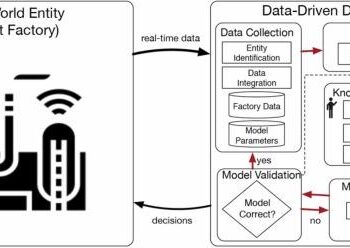Revolutionizing Oil and Gas Production: The Impact of Technology
In an era where energy efficiency and resource optimization are paramount, the latest findings from the U.S. Energy Information Administration highlight a remarkable transformation in oil and gas production across the contiguous United States. With rapid technological advancements, the number of wells completed at each site has more than doubled, indicating not only enhanced production capabilities but also a pivotal shift in operational strategies within the industry. This evolution underscores the complex relationship between innovation and resource management as global demand for sustainable energy solutions continues to rise. In this article, we will explore the driving forces behind this surge in well completions, examine technological breakthroughs that facilitate these changes, and discuss their implications for future energy exploration and production in America.
Technological Advancements Enhancing Well Completion Efficiency
The recent wave of technological innovations has dramatically reshaped well completion processes throughout the Lower 48 states, resulting in unprecedented efficiencies that were once thought impossible. Groundbreaking technologies such as Artificial Intelligence (AI) and Machine Learning (ML) are now integral to optimizing drilling operations and refining decision-making processes. Advanced software tools analyze extensive datasets to forecast well performance accurately while improved drilling methods significantly shorten timeframes needed to reach target depths. Additionally, automation technologies are revolutionizing equipment management by allowing operators to perform intricate tasks with greater accuracy while reducing reliance on human intervention.
The rise of smart completion technologies, which enable more flexible well management strategies through real-time monitoring and data collection, is also noteworthy. These innovations allow for immediate adjustments at wells to maximize output effectively. Furthermore, integrating devices from the Internet of Things (IoT) is crucial for streamlining operations by providing actionable insights directly from field activities—this synergy among emerging technologies not only enhances productivity but also mitigates environmental impacts, establishing new benchmarks for sustainable practices within the sector.
Impact of Modern Completion Techniques on Oil Production Dynamics
The implementation of advanced completion techniques has significantly altered oil production dynamics across America’s Lower 48 states. By employing cutting-edge methods like multistage hydraulic fracturing alongside horizontal drilling, producers have successfully increased their rate of well completions per site by over twofold—this advancement leads to a more efficient extraction process that optimizes both time usage and resource allocation.
This increase not only boosts individual company output but also contributes positively to regional economies heavily dependent on fossil fuel revenues.
- Bigger Output: Enhanced recovery rates translate into higher profitability margins.
- Cuts Costs: More effective drilling practices lead to reduced operational expenses.
- Lesser Environmental Footprint:Modern techniques often result in minimal surface disruption while preserving ecological integrity.
| Tactic Used | Main Benefit Achieved |
|---|---|
| >Multistage Hydraulic Fracturing<< /td>> < | >Maximizes contact with reservoirs<< /td>> |
| >Horizontal Drilling<< / td >> << td >>Enhances recoverable reserves<< / td >>
Strategic Insights for Optimizing Resource Recovery in Drilling OperationsA strategic approach toward maximizing resource recovery becomes essential as drilling operations evolve rapidly.< strong >Investing in cutting-edge technology< / strong >is one key recommendation; focusing on real-time data analytics along with automation can greatly enhance drilling performance while improving recovery rates overall . By utilizing predictive modeling tools combined with machine learning algorithms , companies can pinpoint inefficiencies within their operations leading them towards informed decisions that boost extraction levels . Moreover , fostering an environment conducive to< strong >cross-disciplinary collaboration< / strong >among teams may yield innovative solutions tailored specifically towards unique challenges encountered during various types of drillings . Cultivating partnerships with local regulatory agencies alongside engaging community initiatives plays a vital role too when it comes down maximizing resources recovered efficiently . Establishing collaborations focused around< strong >sustainable practices< / strong >demonstrates commitment towards environmentally responsible approaches whilst garnering support from surrounding communities . Additionally , implementing robust monitoring systems designed track environmental impacts concurrently alongside extraction efforts ensures compliance regulations thus enhancing public perception positively about industry activities overall.< br > < Investing in workforce training programs centered around new tech & sustainability practices further amplifies efficiency gains fostering culture continuous improvement advanced environments.< br > Conclusion: Embracing Innovation’s Role in Energy Production Transformation |






























